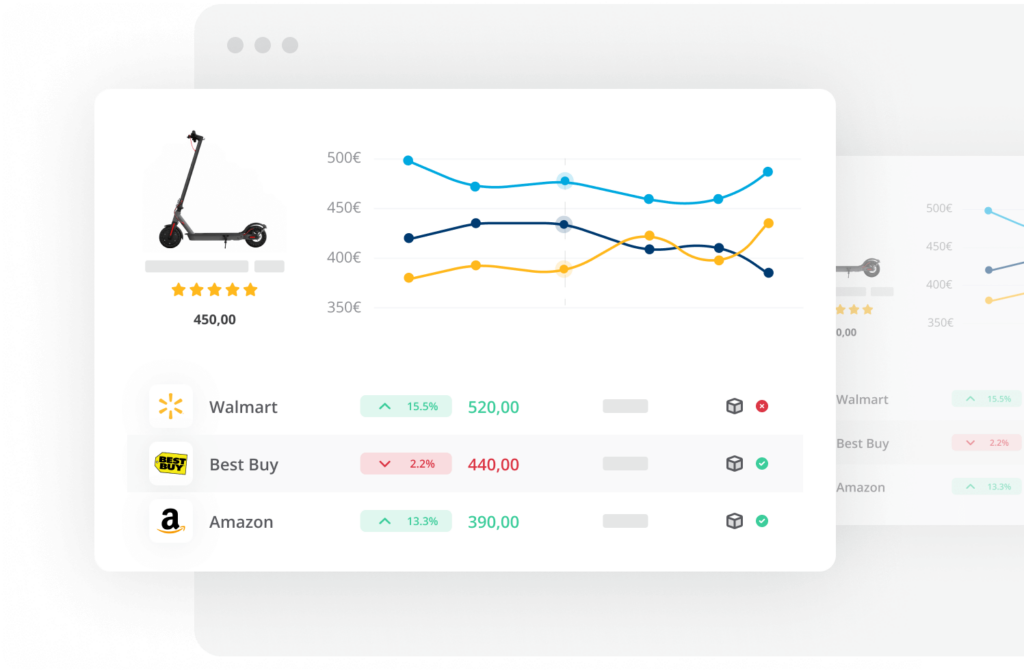One of the most effective strategies to gain a competitive edge today is through pricing intelligence. By leveraging advanced pricing intelligence tools, companies can identify market trends, optimize pricing strategies, and ultimately drive profitability. Let’s explore how these tools work and the benefits they offer to businesses.
Understanding Pricing Intelligence Tools

Image Source: Minderest
Pricing intelligence tools are sophisticated software solutions designed to collect, analyze, and interpret vast amounts of pricing data from various sources. These tools utilize advanced algorithms and machine learning techniques to provide actionable insights into market trends, competitor pricing, and consumer behavior.
The core components include:
- Data Collection: These tools gather data from multiple sources, such as e-commerce websites, competitor listings, and market reports. This data collection is done in real-time, ensuring that businesses have access to the most current information.
- Data Analysis: Once the data is collected, the tools analyze it to identify patterns, trends, and anomalies. This analysis helps businesses understand how prices fluctuate over time and across different markets.
- Visualization: The tools often present the analyzed data in easy-to-understand visual formats, such as graphs, charts, and dashboards. This visualization aids in quickly identifying trends and making informed decisions.
- Recommendation Engines: Many tools come with recommendation engines that suggest optimal pricing strategies based on the analyzed data. These recommendations can be tailored to specific business goals, such as maximizing profit margins or increasing market share.
Identifying Market Trends with Pricing Intelligence

One of the most significant advantages of pricing tools is their ability to identify market trends. Here’s how businesses can leverage these tools to stay ahead:
- Monitoring Competitor Prices: By continuously tracking competitor pricing, businesses can identify trends in pricing strategies, such as discount periods, promotional offers, and price changes. This information is crucial for developing competitive pricing strategies.
- Understanding Consumer Behavior: Pricing intelligence tools can analyze consumer behavior patterns, such as purchase frequency, preferred price ranges, and response to promotions. This understanding helps businesses tailor their pricing strategies to meet consumer expectations and drive sales.
- Detecting Seasonal Trends: Seasonal trends significantly impact pricing strategies. These tools can identify patterns related to holidays, events, and seasonal demand fluctuations, allowing businesses to adjust their prices accordingly.
- Identifying Price Elasticity: These tools help businesses understand price elasticity, which is the measure of how sensitive consumers are to price changes. By analyzing historical data, companies can determine the optimal price points that maximize revenue without alienating customers.

Image Source: GrowByData
Benefits of Leveraging Pricing Intelligence
The use of pricing intelligence tools offers numerous benefits to businesses, including:
- Increased Profitability: By optimizing pricing strategies based on accurate data, businesses can increase their profit margins. The tool also help identify the sweet spot between competitive pricing and profitability.
- Enhanced Competitiveness: Staying ahead of competitors requires real-time insights into their pricing strategies. These platforms provide businesses with the information needed to remain competitive in the market.
- Improved Decision-Making: Data-driven decision-making is crucial in today’s business environment. These tools provide actionable insights that help businesses make informed decisions quickly and confidently.
- Efficient Pricing Management: Managing prices across multiple channels and markets can be complex. Such tools streamline this process by providing a centralized platform for pricing management, reducing the risk of errors and inconsistencies.
- Customer Satisfaction: Understanding consumer behavior and preferences allows businesses to set prices that meet customer expectations. This leads to increased customer satisfaction and loyalty.
Getting Started
Implementing pricing intelligence tools requires a strategic approach. Here are some steps to consider:
- Identify Business Goals: Determine what you aim to achieve with pricing intelligence, such as increasing market share, improving profit margins, or enhancing customer satisfaction.
- Choose the Right Tool: There are numerous tools available, each with its unique features. Select a tool like 42Signals that aligns with your business goals and integrates seamlessly with your existing systems.
- Train Your Team: Ensure that your team is adequately trained to use the pricing intelligence tool. This includes understanding how to interpret data and implement recommended pricing strategies.
- Continuously Monitor and Adjust: The market is constantly evolving, so it’s essential to continuously monitor pricing trends and adjust your strategies accordingly. Regularly reviewing and updating your pricing strategies ensures that you remain competitive.
Conclusion
Adopting pricing intelligence strategies and tools is beneficial for businesses in the long run.
If you would like to have a free demo of our tool, 42Signals, sign up for a free trial today.





